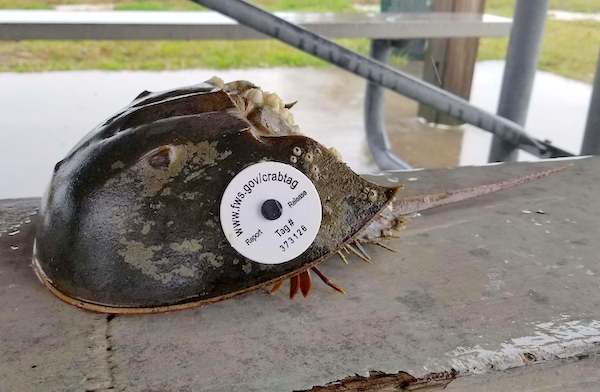SEBASTIAN – Spring is the peak Horseshoe Crab mating season for 2019 in Sebastian, Florida and biologists with the Florida Fish and Wildlife Conservation Commission (FWC) encourage sighting reports with the FWC Reporter application.
Horseshoe crabs mate year-round, and it is most common to see groups along the shore in March and April. To identify mating pairs, look for a smaller male on top of a larger female.
Beachgoers in Sebastian will likely have the best luck spotting horseshoe crabs around high tide, within three days of a new or full moon. The next new moon is Wednesday, March 6, and the full moon is Thursday, March 21.
These sighting reports provide important information about population distribution to the FWC. Although horseshoe crabs have existed for about 450 million years, little is known about Florida populations. Public sighting information helps FWC researchers target spawning beaches for the Florida Horseshoe Crab Watch Program, a citizen science initiative to collect scientifically accurate data throughout the state.
If you see a horseshoe crab on its back, you can help it flip back over by gently picking it up (holding both sides of the shell), turning it over, and releasing it back into the water. Simple actions like this help conserve this species and the many other species that depend on it.
The FWC asks the public to report sightings by filling out this form.
In addition, the University of Florida has tagged horseshoe crabs as part of its watch program with two sites in Sebastian.
“The program takes advantage of the beach nesting behavior of horseshoe crabs to collect valuable information. Volunteers walk a known section of beach at predetermined times and count the number of horseshoe crab mating groups observed. A small subset of those crabs counted are collected, tagged with a small numbered disc, and released back into the wild, and information about those crabs is documented,” said Holly Abeels.

Anyone can report sightings of tagged horseshoe crabs. If you see a tagged crab (like the one in the photo above):
- Snap a picture of the tag or record the tag # (number is on the bottom of the tag)
- Note the date, location, and general condition of the crab (alive or dead)
- Report data using the online form at www.fws.gov/crabtag or by calling 1-888-546-8587 (1-888-LIMULUS)
It’s important to NOT remove the tag. When recording the tag number, try to limit disturbing the horseshoe crab. Try not to pick the crab up.
For more information about the Florida Horseshoe Crab Watch program and about horseshoe crabs please visit myFWC.com/HorseshoeCrabs.